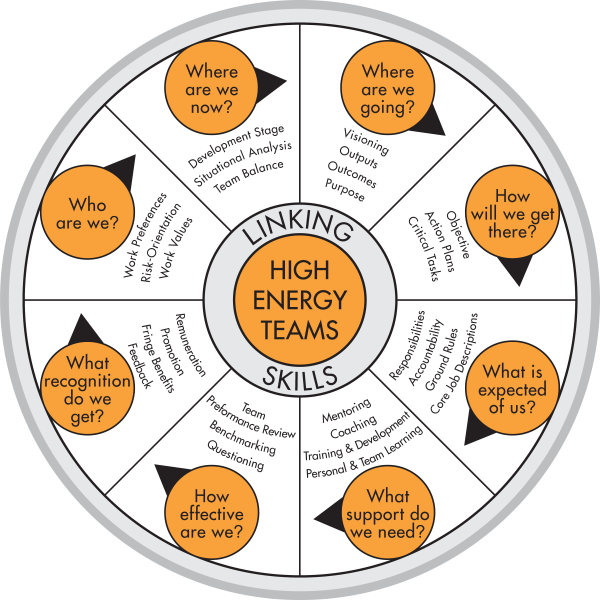
The Hidden Performance Gap
14 July 2025
Why Most Teams Operate Without Critical Visibility
You deliver disappointing sprint results, sit through another unproductive team meeting, or watch a top performer quietly disengage. No crisis. Just another Wednesday.
Each moment signals something deeper. But taken together, against a backdrop of performance pressures and unrelenting demands for results, they reveal a pattern most leaders struggle to diagnose.
Research from Atlassian exposes the scale of this challenge: 25 billion hours are lost annually to inefficient teamwork. Employees spend 80% of their workday communicating, yet 72% of meeting time is unproductive. This isn't about individual performance, it's about teams operating without visibility into the dynamics that actually drive their success.
Leaders naturally focus on managing outcomes. Faced with stakeholder expectations and pressure to deliver, they track what they can see: deliverables, revenue, projects shipped. But this external focus overlooks something fundamental: the underlying conditions that create those outcomes.
We've worked with hundreds of teams facing this exact challenge. The pattern is consistent: leaders who only measure outputs find themselves in a reactive cycle, addressing symptoms rather than causes. Team health deteriorates gradually, effectiveness declines subtly, and by the time problems surface in traditional metrics, significant damage has already occurred.
This isn't a failure of leadership, it's a gap in measurement methodology. Most leadership development doesn't teach us how to measure the conditions that predict team success.
The Measurement Blind Spot
Here's what we've learned from years of team effectiveness research: tracking deliverables tells you what happened, but measuring team dynamics reveals what's going to happen.
When we ignore the conditions that drive performance, problems accumulate in the background – resurfacing as decreased engagement, increased turnover, and declining results.
Consider the data: 3 out of 4 meetings are used to plan other meetings. Only 10-15% of individuals exhibit true self-awareness, which can disrupt team harmony and halve success chances. With 33% of employees citing technology issues as their top distraction, and 47% experiencing digital friction several times weekly, most teams operate in a cycle of guessing rather than knowing.
Traditional measurement approaches have inherent limitations. Annual engagement surveys come too late – they're autopsy reports, not health diagnostics. 1-on-1s, while valuable, are subjective and inconsistent. Pulse checks often lack the depth to reveal systemic issues. These approaches focus on outputs rather than the inputs and conditions that shape sustainable team success.
A Framework for Measuring What Matters
Through decades of research into high-performing teams, we've identified eight fundamental dimensions that predict team success. These aren't abstract concepts, they're measurable conditions that separate thriving teams from struggling ones.

High-Energy Teams Model
Team Identity: Does the team have a clear sense of who they are and what they stand for?
Current State: Can team members accurately assess where they are right now?
Strategic Direction: Is there shared clarity on where the team is heading?
Execution Approach: Does everyone understand how the team will achieve its goals?
Role Clarity: Are expectations and responsibilities clearly defined?
Support Systems: Does the team have the resources and development they need?
Effectiveness Metrics: Are there meaningful ways to measure real impact?
Recognition Patterns: Does the team feel valued in ways that sustain motivation?
What makes these dimensions powerful isn't just their comprehensiveness, it's their predictive nature. Teams strong in these areas consistently outperform those that aren't, regardless of industry or context.
When teams regularly assess these dimensions, patterns emerge that day-to-day operations often obscure:
- Where are we unconsciously creating bottlenecks or confusion?
- What strengths are we underutilizing?
- Which small issues have the potential to become major problems?
The goal isn't perfection across all dimensions, it's awareness. Teams that understand their current state can make informed decisions about where to focus their improvement efforts.
The Elements of Effective Team Measurement
Effective team measurement requires more than good intentions—it requires systematic approach. Based on our experience with thousands of teams, several elements prove essential:
Multiple perspectives matter. Single-source feedback, whether from leaders or team members alone, creates blind spots. The most accurate picture emerges when you gather input from everyone who interacts with the team's work.
Consistency enables tracking. Ad hoc check-ins provide snapshots, but sustainable improvement requires regular measurement that reveals trends over time.
Early indicators beat lagging metrics. The best measurement systems identify potential problems before they impact deliverables, giving teams time to course-correct.
The research supporting this approach is substantial. Organizations that implement systematic team health measurement report improved performance, higher retention, and greater resilience during challenging periods.
Moving Beyond Gut Instinct
Most leaders rely on intuition to gauge team health. They notice energy levels in meetings, observe collaboration patterns, and sense when something feels off. This intuition is valuable – and insufficient.
Human perception has limitations. We notice what confirms our existing beliefs, miss gradual changes that happen slowly, and often conflate activity with effectiveness. A team that looks busy might be spinning its wheels. A quiet team might be deeply focused or completely disengaged.
The most effective leaders combine intuition with systematic measurement. They use data to validate hunches, discover blind spots, and track changes that happen too gradually to notice day-to-day.
This isn't about replacing human judgment with spreadsheets, it's about giving judgment better information to work with. When leaders understand both what they see and what the data reveals, they can make more informed decisions about where to invest their time and energy.
The teams that thrive tomorrow are the ones whose leaders measure what matters today.

